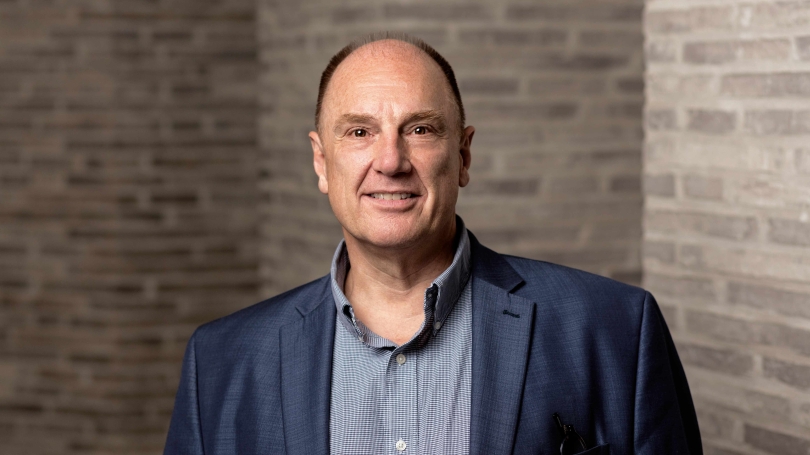PLANNING UNINTENTIONAL ENCOUNTERS WITH ART
JOHN R. STOMBERG, Virginia Rice Kelsey 1961s Director
Hood Quarterly, winter 2025
As we enter the Hood Museum of Art's fortieth year of operation (it opened in September 1985), we have an opportunity to look backward and forward at the same time. Over the coming months, I plan to use this forum to celebrate different aspects of our program with an eye toward this theme: where we've been and where we're headed. The present subject is public art, or how to plan serendipitous encounters with creativity and inspiration for all those who spend time on our campus.
Our outdoor public art collection predates the museum itself—the Mark di Suvero sculpture came to the College in 1976. It caused quite a stir at the time, but the process that followed, which carefully considered the role of art in public places, opened the door to many future projects. Next up, the audacious Beverly Pepper sculpture took shape across from the library and connected the campus to cutting-edge ideas about art, architecture, and landscape. The amazing Joel Shapiro sculpture followed. At first, it graced the entrance of the Charles Moore–designed Hood Museum courtyard, and it now occupies a place of honor on the Maffei Arts Plaza at the south entrance to the museum. These early acquisitions boldly announced the College's, and the museum's, intention to engage with contemporary art and ideas and share them beyond the walls of the museum. Since then, Dartmouth has continued to add art to new areas of the campus at a deliberate pace.
The question, perhaps, is why: why spend the resources on works located outside the art museum?
Is it to beautify the courtyards and other interstitial spaces located throughout the College's sprawling footprint? Well, yes, but that is only a small part of it. Art outdoors offers unplanned moments of connection—to other people's ideas, to creativity, to inspiration. Each time we walk by a work of art, we add a little experience to all the others that are shaping us here in Hanover. Whether student, staff, faculty, or visitor, we have the opportunity to pause, however briefly, and contemplate something that exists beyond our immediate concerns. Art can expand our universe: it can puzzle us; it can delight us; it can instigate a chain of thoughts and ideas that might otherwise have lain dormant in our psyche. It is for these reasons that we carefully curate the public art on campus: whether the engagement with these sculptures is momentous or momentary, intentional or accidental, we believe that art adds significantly to the lived experience of everyone who spends time here.
